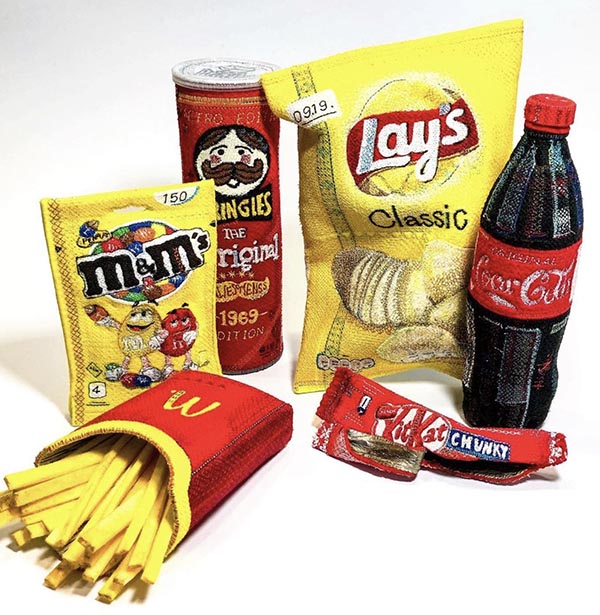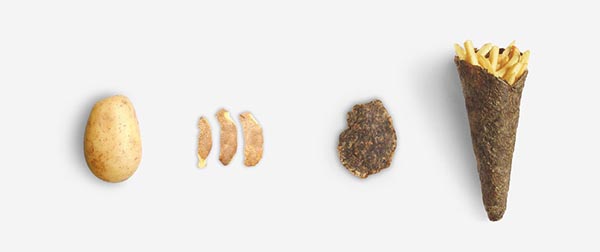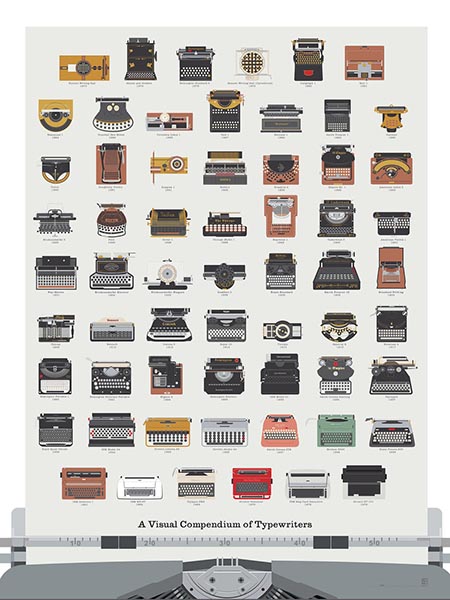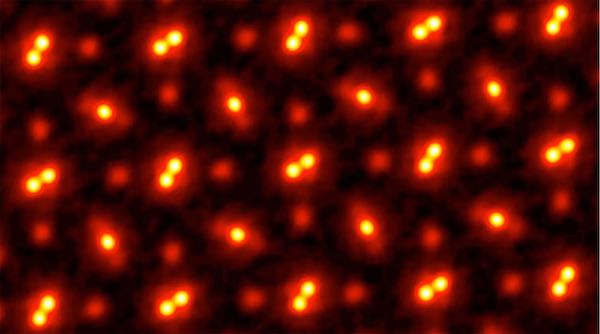Your Friday Night Own Porch Party
QR Codes Replace Traditional Menus #WhatDoYouThink? https://t.co/tXeCaU8ShY pic.twitter.com/lpBiLUbKsb
— The Onion (@TheOnion) July 30, 2021
Main Menu
Over at Mental Floss, a video in their Food History series looks at the history of restaurant menus. Arguably the first menu was the Banquet Stele of Assurnasirpal II, a stone slab created circa 911–612 BC to commemorate the Neo-Assyrian king’s renovation of the city of Kalhu (now Nimrud). The stele describes the lavish feast the king threw to celebrate…himself, and listed all the foods that were served. Not a “menu” in the sense of what we use today, which actually dates from Song Dynasty China around 1100 BCE, which is where the first businesses that resemble modern restaurants appeared. These were distinct from inns, which fed guests, but only whatever they had, not a list of items from which patrons could choose. Restaurants came late to Europe, and in France, for example, the first real restaurants didn’t appear until the end of the 18th century. It is from France that we get the word “menu,” where the Latin word minutus (“small, detailed”) was adapted into menu de repas “(list of what is served at a meal”).
Check it out while you eat lunch:
Signs of the Times: Truth In Advertising
I wouldn’t go advertising my low ratings on Yelp. But, that’s just me…#Calimesa pic.twitter.com/8UQM1Amg0V
— Tiffany Fricke (@Quintuga) July 29, 2021
Deeply Felt
Here is perhaps an up-and-coming new application area: textile art. Via Laughing Squid:
Polish textile artist Alicja (Alice) Kozlowska creates fantastically detailed reproductions of popular foods using embroidered felt. Included in Kozlowska’s virtual pantry are named-brand candy bars, cans of soda, bags of crunchy snacks, boxes of cereal, tins of anchovies, and even Chinese takeout.

Says the artist:
Painting by sewing for me is the format to address deeply negative, culturally constructed indifference. I create 3d embroidered felt sculptures of everyday objects to provide an opportunity to rethink these items we take for granted. I draw inspiration from the reality that surrounds me, consumerism, and everyday objects.
Signs of the Times: As Sure as Eggs Is Eggs
Whole Foods staff at wit’s end pic.twitter.com/ZbX3ptp2UM
— Jason Narducy (@SplitSingleband) August 2, 2021
Packaging Apeel
How’s this for a circular economy: French fry packaging made from the very waste created in the French fry production process. Via Core77, Milan-based product designer Paolo Stefano Gentile has developed a way to take discarded potato peels and make a carrier cone for street fries out of them.

“The potato peel is made up of starches and fibers components, which after maceration and natural drying, acquire the ability to bond with each other and harden. The obtained material is completely made of production waste and is 100% biodegradable.
“After being used, the packaging can be usefully re-inserted in the biological cycle becoming animal food or fertilizer for plants.”
Beat the DRM
Oh my god it's DRM cups https://t.co/oFmQbC1ITM
— Internet of Shit (@internetofshit) July 29, 2021
Graphene Goes for the Gold…and Silver
Was it a good week for graphene news? It’s always a good week for graphene news! Graphene played a starring role at the Tokyo Olympics. Korean archer Kim Je-deok won two gold medals using a graphene-enhanced bow. And Annemiek van Vleuten of the Dutch Cycling Team won a silver medal wearing a shirt printed with Directa Plus’ graphene-enhanced Thermal Planar Circuit technology.
We wonder how soon it will be before there is an actual graphene medal at the Olympics.
It’s Not Inaccurate
#FromACertainPointOfView ???? https://t.co/Z7GWGiP9np
— Mark Hamill (@HamillHimself) August 4, 2021
Turn and Face the Strain
Do you use Google Drive to share files? Yeah, we (grudgingly) do, as well, when it isn’t a pain in the tuchus to get permission. Anyway, apparently big changes are coming to Google Drive which will affect, ostensibly in a good way, how you share, back up, and manage files. A lot of these changes involve security, which usually means that only hackers will be able to access your files. Gizmodo has a guide as to what to expect.
Google is changing the way that certain shared files and folders work in Drive—or, to be more exact, it made the change back in 2017 and is now fully enforcing it. That means some of your older shared links might start breaking for some people.
… There are lots of caveats:
No doubt. We continue.
Google Docs, Sheets, Slides, and Forms aren’t affected, for starters. And people who have already used these old sharing links will still have access, just like before. It’s only if you’re reusing older links with new people that you’re going to have problems.
And, hooray!, a new app.
As if a widespread security update wasn’t exciting enough, Google is also pushing out a brand new software app for Windows and macOS, replacing the old Backup & Sync tool that you may or may not have ever used (and which itself was a replacement for an even older tool some four years ago).
The new program makes it easier than ever to access your Drive files from the desktop. You can keep some or all of them stored locally, which is handy for larger files and if there’s ever a problem with your internet connection, and you can quickly upload files such as photos and videos from your computer to the cloud.
Anyway, if you use Google Drive be sure to click through and find out what you’ll be swearing about before long.
Also Not Inaccurate
"Anything that is in the world when you’re born is normal and ordinary and is just a natural part of the way the world works...
— Quite Interesting (@qikipedia) August 3, 2021
Anything invented after you're thirty-five is against the natural order of things." DOUGLAS ADAMS
Pop Charts
We all love a good infographic and, via Core 77, a company called Pop Chart creates infographics for The Today Show, The New York Times, Bloomberg and The Economist amongst others. But their real stock in trade is “creating and selling fantastic posters that document the forms of objects and structures.” There are dozens to choose from, but we like this compendium of typewriters:

A steal at $30, and they’ll even frame it for you.
Books in the Wall
Interesting brickwork feature on a wall in Wimbledon (the public library)- I’ve never noticed it before! Several of these panels. pic.twitter.com/GD0ApfXJSt
— Mike Batt LVO (@Mike_Batt) June 30, 2021
Atom Ants
Earlier this summer, Boing Boing had a link to an article in the Cornell Chronicle featuring the highest-resolution image of atoms ever seen by humans, specifically, the atoms in a praseodymium orthoscandate crystal, zoomed in 100 million times.

Using an algorithm-powered technique called ptychography, the Cornell University researchers were able to achieve a resolution triple that of the latest generation of electron microscope. The only blurring you see in the image is caused by the atoms actually jiggling. Ptychography works by scanning overlapping scattering patterns from a material sample and looking for changes in the overlapping region.
Islands
Best islands ranked.
— Orkney Library (@OrkneyLibrary) July 9, 2021
15. you
14. can't
13. rank
12. islands
11. because
10. they're
9. all
8. equally
7. beautiful
6. in
5. their
4. own
3. unique
2. way
1. Orkney https://t.co/ROLvUOI5RJ
Antrepreneur
It’s great to see kids develop a passion for a subject. Via CBC, meet Benjamin Arana-Stirling, an eight-year-old who not just admires ants, but as become an “entrepreneurial ant dealer.”
Eight-year-old Benjamin Arana-Stirling loves ants — so much so, he's made it his task to hunt for their queens, luring them into test tubes where he feeds them honey by toothpick, and watches and cares for them.
But he's not your average insect hunter; he's an entrepreneurial ant dealer. He trades his finds to other ant collectors and aficionados — for $30 a pop.
"How'd I describe them? Beautiful, wonderful creatures, and cool to watch," the Halifax boy told The Current.
It can be a tough business. Benjamin estimated he's been bitten by about 50 fire ants. But he loves them anyway.
And it’s that passion that inspires professional entomologists.
Ehab Abouheif, a biology professor at McGill University in Montreal, said it's kids like Benjamin that give his work meaning.
"I've spent my entire life, you know, studying ants," he said. "To see other people, especially so young, get so excited about their social lives … I find it really inspiring."
Toying Around
Barbie Debuts Doll Honoring Covid-19 Vaccine Creator #WhatDoYouThink? https://t.co/JJtYXwPPF3 pic.twitter.com/foiWuF9N4n
— The Onion (@TheOnion) August 5, 2021
But Wait, There’s More!
When we think of humankind’s greatest inventors, the names that come to mind are usually Thomas Edison, Alexander Graham Bell, Benjamin Franklin—but one name that perhaps fairly (or maybe unfairly) gets left out of the pantheon is Ron Popeil. Sure, the Pocket Fisherman pales in comparison next to the telephone and the Veg-o-Matic lacks the importance of the light bulb, and that horribly creepy commercial for Mr. Microphone (“Hey, good lookin’, we'll be back to pick you up later”) was perhaps the nadir of human civilization, but Popeil himself was perhaps one of the most commercially successful inventors. He passed away on July 29, and the New York Times has his obit:
And many American homes still have, or once had, the products he hawked, some schlocky gizmos that were quickly discarded and others long-running fixtures: the Showtime Rotisserie & BBQ, the Ronco Electric Food Dehydrator, Popeil’s Pasta & Sausage Maker, Mr. Microphone, the Bagel Cutter and the Inside-the-Shell Egg Scrambler, among them.
The products chopped, charred, shined, sharpened, cleaned, massaged, folded a fishing rod into a pocket and covered bald spots with a spray can. He sold them all without shouting, a folksy, calming presence that made half-hour infomercials their own form of entertainment as he demonstrated the product and set up testimonials from the audience.
Mr. Popeil’s mastery of television marketing, dating to the 1950s but spanning several decades, made him nearly as recognizable onscreen as the TV and movie stars of his era. Several of his catchphrases — especially “But wait! There’s more” and “set it and forget it” — have endured beyond his retirement.
Say what you want about the products, but the guy knew how to market them.
Prints Charming
Satan wants your prints, who's in https://t.co/eGI9jSG16k
— Internet of Shit (@internetofshit) August 3, 2021
Now That’s a Knife
One invention that is not Mr. Popeil’s but is arguably more practical than anything he came up with is the Self Standing Spreader Knife Air, which we think should get a Nobel Prize for…something. Let King Gustav figure out what. Anyway, via Core 77, Swedish industrial designer Harald Hynell has invented a spreading knife that rests on its handle to keep the material you are spreading—butter, cream cheese, peanut butter—in the air rather than on the counter or cutting board.

But wait! There’s more!
The knife is produced and sold by Bosign, a Swedish product company founded by Hynell. It comes in Olive wood, as well as stainless steel or brass, in small and large sizes. Prices run from €15 to €50 (USD $18 to $60).
Use as Intended
I use Shazam almost exclusively to identify songs I never want to hear again
— e m m a s w i f t (@emmaswiftsings) June 11, 2021
Tesla
We think Nikola Tesla would approve of Patrik Proško’s 3D anamorphic sculpture of Tesla using appliances—“washing machines, televisions, computers, radios, printers, microwaves, videos,” although not parts of the car that usurped his name. Check out Proško’s video:
Just Say No
I can’t fully express how much I’d rather not. https://t.co/mFRB6D57mB
— Jenny Andrew (@DrAndrewV2) August 5, 2021
We Know Just the Guinan
Are you looking for a change of career? To something involving space travel? But you have no astrophysics or engineering knowledge? If so, good news! As it turns out, SpaceX is looking for a bartender for its spaceport. Says Business Insider:
Elon Musk's SpaceX is seeking a "spaceport mixologist."
It's likely the new bartender will be sent to work at a tiki bar at the space exploration group's so-called Starbase launch site at Boca Chica, near Brownsville, south Texas.
SpaceX is looking for an experienced bartender who can pair drinks with a themed menu and work in a resort, according to a job posting on the company's website.
That’s one small shot for a man, one giant cocktail for his date.
A City of Two Tails
Who wore it better? The German printer Nikolaus Marschalk in 1516 or @starbucks in 1971? pic.twitter.com/G8pymwM38l
— Drew Thomas (@DrewBThomas) August 5, 2021
This Week in Printing, Publishing, and Media History
August 2
1790: The first United States Census is conducted.
1870: Tower Subway, the world’s first underground tube railway, opens in London, England, United Kingdom.
1922: Scottish-Canadian engineer, inventor of the telephone Alexander Graham Bell dies (b. 1847).
1924: American novelist, poet, and critic James Baldwin born.
1932: The positron (antiparticle of the electron) is discovered by Carl D. Anderson.
1988: American short story writer and poet Raymond Carver dies (b. 1938).
2018: Apple Inc. becomes the first U.S. company to be valued at over $1 trillion.
August 3
1527: The first known letter from North America is sent by John Rut while at St. John's, Newfoundland.
1778: The theatre La Scala in Milan is inaugurated with the première of Antonio Salieri’s Europa riconosciuta.
1811: American businessman, founded the Otis Elevator Company Elisha Otis born.
1859: The American Dental Association is founded in Niagara Falls, New York. (Was their theme song “Bridge Over Troubled Water”?)
1860: French-Scottish actor, director, and producer, inventor of the Kinetoscope William Kennedy Dickson born.
1946: Santa Claus Land, the world’s first theme park, opens in Santa Claus, Ind.
1977: Tandy Corporation announces the TRS-80, one of the world’s first mass-produced personal computers.
Heard of a ??
— ?????????????? ?????????????? (@fredric_wertham) August 3, 2021
Loaded w/ ??
Packed up & ready to go
Heard of some ?? sites
Out by the ??
A place where nobody knows
The sound of ??
Off in the distance
I'm getting used to it now
Lived in a brownstone
Lived in a ghetto
I've lived all over this town
Fear of ??
3 Aug 1979?? pic.twitter.com/galr8TfZmp
August 4
1693: Date traditionally ascribed to Dom Perignon’s invention of champagne.
1792: English poet and playwright Percy Bysshe Shelley born.
1821: The Saturday Evening Post is published for the first time as a weekly newspaper.
1834: English mathematician and philosopher John Venn, inventor of the Venn diagram, born.
1875: Danish novelist, short story writer, and poet Hans Christian Andersen dies (b. 1805).
August 5
1735: New York Weekly Journal writer John Peter Zenger is acquitted of seditious libel against the royal governor of New York, on the basis that what he had published was true.
1850: French short story writer, novelist, and poet Guy de Maupassant born.
1914: In Cleveland, Ohio, the first electric traffic light is installed.
1930: American pilot, engineer, and astronaut Neil Armstrong born.
1957: American Bandstand, a show dedicated to the teenage “baby-boomers” by playing the songs and showing popular dances of the time, debuts on the ABC television network.
2019: American author, Pulitzer Prize winner, and Nobel laureate Toni Morrison dies (b. 1931).
August 6
1809: English poet Alfred, Lord Tennyson, born.
1926: In New York City, the Warner Bros.’ Vitaphone system premieres with the movie Don Juan starring John Barrymore.
1956: After going bankrupt in 1955, the American broadcaster DuMont Television Network makes its final broadcast, a boxing match from St. Nicholas Arena in New York in the Boxing from St. Nicholas Arena series.
1991: Tim Berners-Lee releases files describing his idea for the World Wide Web. WWW debuts as a publicly available service on the Internet. (Too bad it never caught on.)
August 7
1834: French weaver and inventor, inventor of the Jacquard loom Joseph Marie Jacquard dies (b. 1752).
1926: American puppeteer, voice actor, and singer Stan Freberg born.
1928: Canadian-American magician and author James Randi born.
1944: IBM dedicates the first program-controlled calculator, the Automatic Sequence Controlled Calculator (known best as the Harvard Mark I).
1959: The Lincoln Memorial design on the U.S. penny goes into circulation. It replaces the “sheaves of wheat” design, and was minted until 2008.
1981: The Washington Star ceases all operations after 128 years of publication.
August 8
1876: Thomas Edison receives a patent for his mimeograph.
1969: At a crosswalk in London, photographer Iain Macmillan takes the photo that becomes the cover image of the Beatles' album Abbey Road, leading to nearly five decades of Beatles fans nearly being run down on that same crosswalk trying to imitate it.










Discussion
Join the discussion Sign In or Become a Member, doing so is simple and free